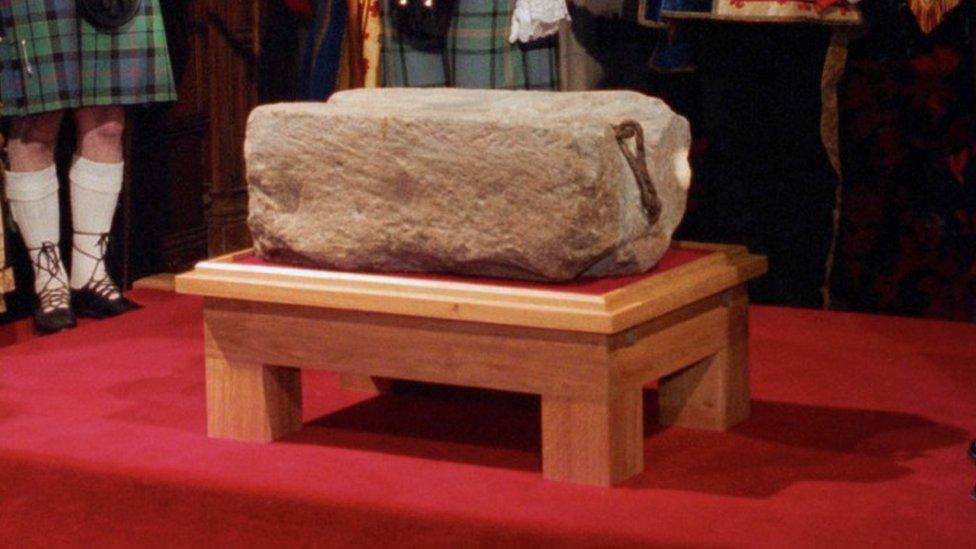Stone of Destiny heads south for coronation
- Published
The Stone of Destiny has left Edinburgh Castle for the first time in more than 25 years
The Stone of Destiny has left Edinburgh Castle for the first time in more than 25 years as it heads to London for the coronation of King Charles III.
The stone, an ancient symbol of Scotland's monarchy, was seized by King Edward I of England in the late 13th Century and taken to Westminster Abbey.
It remained in England for 700 years and formed part of the coronation chair on which kings and queens were crowned.
The stone was returned for permanent display in Scotland in 1996.
But it was was agreed it would return to Westminster Abbey for any future coronation ceremony.
There will be a free live screening of the coronation in Edinburgh's West Princes Street Gardens on 6 May.
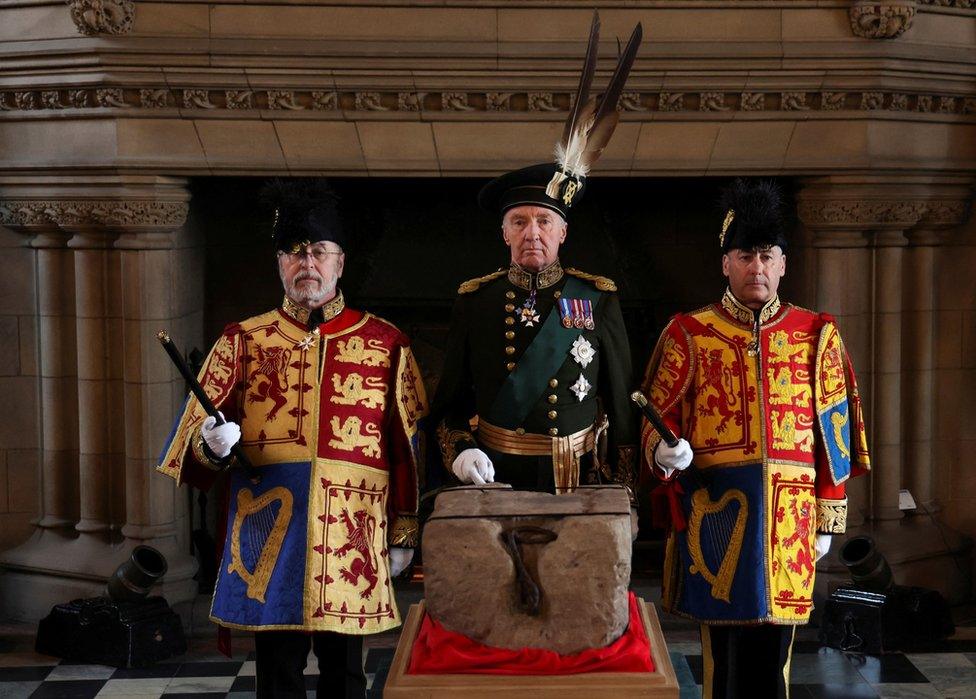
The stone was moved from Edinburgh Castle on Thursday
The 150kg (336lb) red sandstone slab, also known as the Stone of Scone, is 66cm (26in) long, 42cm (17in) wide, and 27cm (10.5in) high.
It was used for the coronation of Scots kings for hundreds of years before being taken by Edward I of England in 1296, during the Wars of Independence.
He made the stone part of a carved oak coronation chair which has been used during the inauguration of 26 Kings and queens at Westminster Abbey since.
The stone stayed in England for hundreds of years, until Christmas Day in 1950 when four students from Glasgow broke into Westminster Abbey and took it back to Scotland.
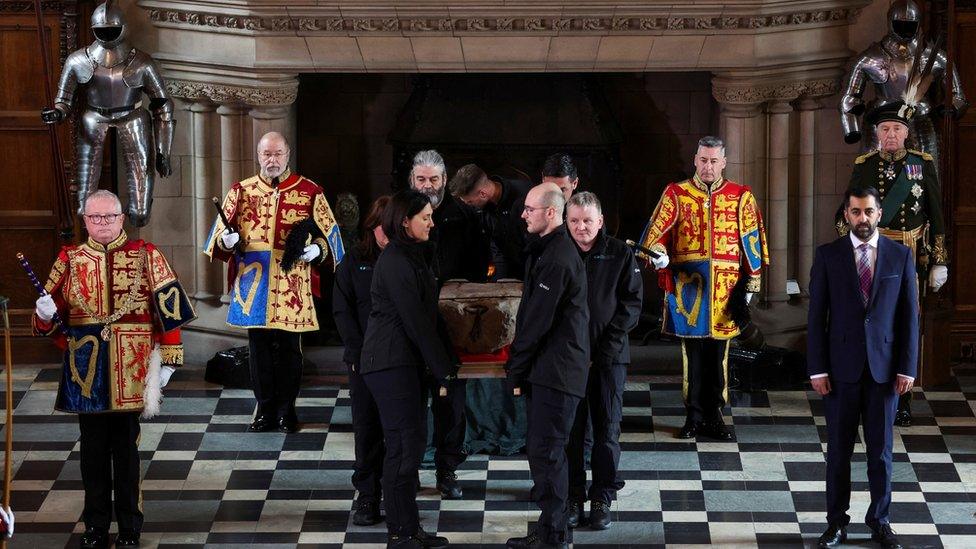
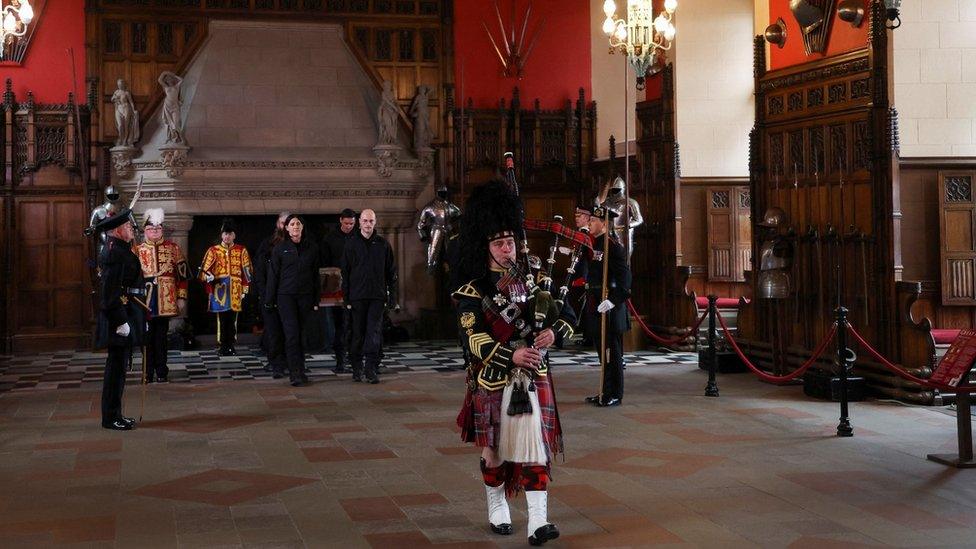

They were led by Ian Hamilton, who wanted to make a statement about Scottish self-rule.
Mr Hamilton, who died last year, told the BBC in a rare interview: "The Stone of Destiny is Scotland's icon,.
"In one of the many invasions by the English into Scotland, they took away the symbol of our nation.
"To bring it back was a very symbolic gesture."
The stone reappeared months later 500 miles away in Arbroath Abbey - a place that was important to Scotland's independence history.
On 11 April 1951, it was returned to Westminster Abbey and replaced in the coronation chair where two years later it had a greater prominence than ever as Queen Elizabeth's coronation was broadcast on television.
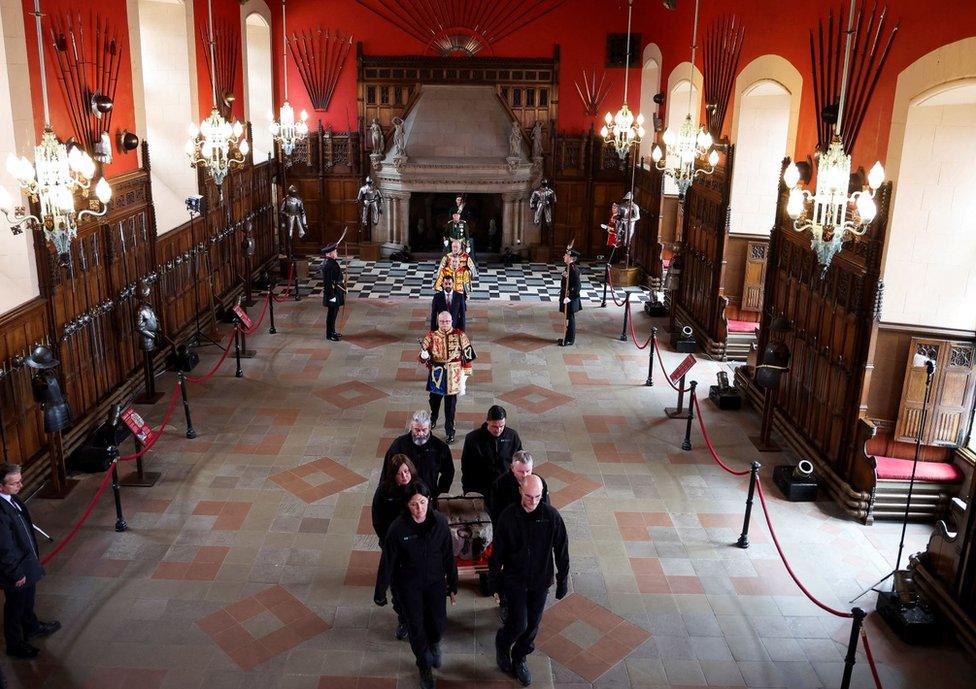
In July 1996, the Queen, along with Prime Minister John Major, agreed the stone should be returned to Scotland.
It now sits next to the crown jewels of Scotland in the Edinburgh Castle Crown Room.
In preparation for its temporary departure to London, a ceremonial procession took place from the castle's Great Hall, led by the Lord Lyon King of Arms - the monarch's representative in Scotland.
Scotland's First Minister Humza Yousaf was in attendance in his capacity as the Keeper of the Great Seal of Scotland.

Historic Environment Scotland (HES), who care for the stone, worked with Police Scotland to ensure it could be transported safely and securely.
It will be transported in a special carrier constructed largely from Scottish oak, which has been made by HES's in-house joinery team.
Kathy Richmond, head of collections and applied conservation, said it was a great responsibility to ensure the safe voyage and return of such an important national symbol.
Mr Yousaf said the stone had a rich and varied history and had been used for centuries in coronations.
The stone will return to Edinburgh Castle in the weeks following the coronation, before it makes its way to Perth in 2024 to be housed in the new Perth Museum.

Read the latest from our royal correspondent Sean Coughlan - sign up here.
- Published6 May 2023
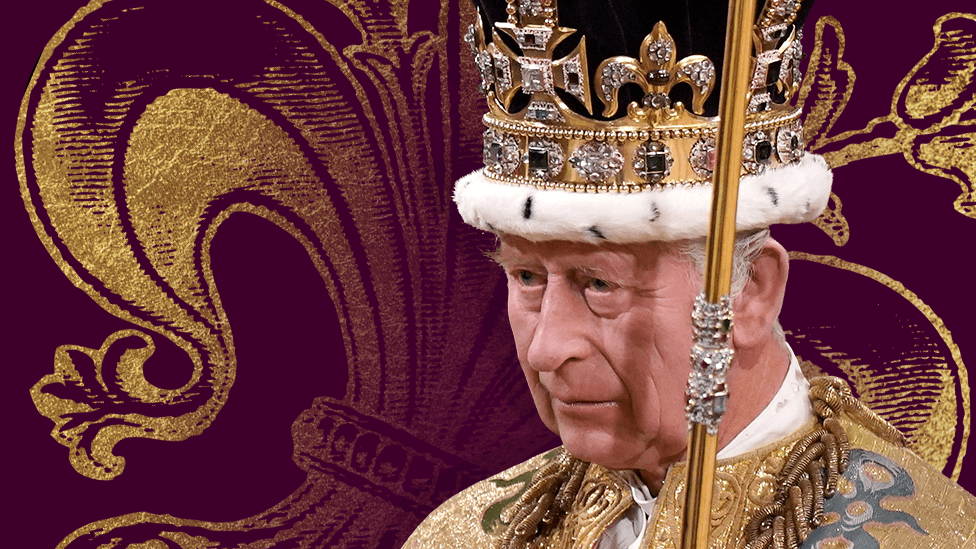
- Published24 March 2023

- Published17 March 2023
